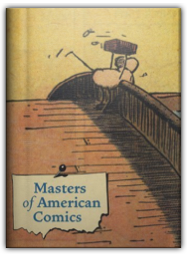
Comic strips and comic books were among the most popular and influential forms of mass media in 20thcentury America. This fascinating book focuses on fifteen pioneering cartoonists—ranging from Winsor McCay to Chris Ware—who brought this genre to the highest level of artistic expression and who had the greatest impact on the development of the form. 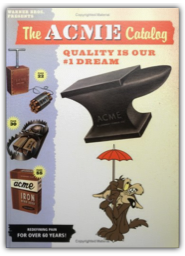
Iron birdseed, anvils, fake holes, and more for years The ACME Company has been the sole purveyor of the fine products used by Looney Tunes characters. Chronicle Books is proud to present an exclusive catalog featuring ACME's must-have, best-selling line of items, each guaranteed to promote a happy* life provided that they are used properly.** Including ACME classics and entirely new and untested items, the ACME Catalog showcases 100 products untarnished by government regulations. There's something here for everyone. An extruder that doubles as a pasta maker for Grandma. A roof-mounted catapult for Dad. And what about a little jet-powered pogo stick for yourself? Each item is matched with a thorough product description, the price, and the shipping cost. As always, the ACME Company brings corporate identity sans responsabilit to everything sold with its label. Please note that the ACME Company has no retail outlets or web site. In other words, this catalog is the only way for consumers to access this highly sought-after ACME line. 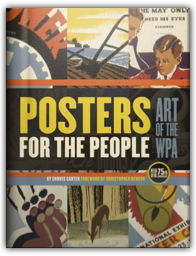
This lavish coffee-table book highlights 500 of the best posters produced by the Works Progress Administration (WPA) during America's 1930s and 1940s. The WPA employed hundreds of out-of-work artists to raise awareness about public issues and civic life in the United States. These posters provide a snapshot of life (and graphic design) during the Great Depression and offer timeless messages about the merits of hard work, good parenting, a clean house, and healthy personal hygiene. "Posters for the People" includes many 'new' images never before published in book form. Full of beautifully reproduced images and fascinating text about a decisive moment in American history, "Posters for the People" is essential reading for artists, designers, collectors of Americana, and anyone interested in U.S. history. 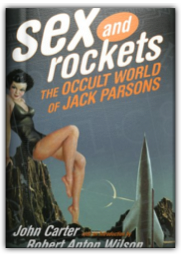
Scientist, poet, and self-proclaimed Antichrist, Jack Parsons was a bizarre genius whose life reads like an implausible yet irresistible science fiction novel. Sex and Rocketslooks at his short life and dual career as cofounder of Jet Propulsion Laboratory (JPL) and leader of the Agape Lodge of Aleister Crowley's Ordo Templi Orientis (OTO). Author John Carter scours primary documents and interviews surviving friends and contemporaries to deliver an intriguing portrait of a dreamy, driven man equally interested in rocketry and magick. From his early childhood and deep attachment to his mother (who killed herself hours after he died) through his nonacademic research and brilliant innovations in solid fuels to his mysterious 1952 demise in a garage-laboratory explosion at the age of 37, the reader gets the impression of a man whose obsession with explosives and propellants was nearly single-minded. Yet this same man found spiritual fulfillment through Crowley's Law of Thelema, conducted magickal operations with L. Ron Hubbard, and signed an oath asserting himself to be the Antichrist—clearly Parsons wasn't a boring guy in a white coat. Carter pulls off the difficult task of integrating Parsons's disparate drives into one compelling story; though there are some rough spots and awkward transitions, one gets the sense that this illuminates the man's life better than a smooth, flawless work would. Robert Anton Wilson's introduction is smart and funny as always, initiating the uninformed into the basics of Crowleyanity while placing Parsons in the context of his times. While it might not be possible to read universal themes into Parsons's life, Sex and Rocketsis an excellent study of a passionate life fully lived. —Rob Lightner |
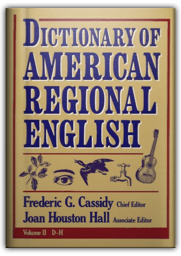
Volume II is every bit as excellent as A-C, and as thought provoking. It's sad to have lost words like faunch (to rant, rage, or fret). The words form a picture of the country a century back, when folks stored their stuff in a hide-nasty (closet), and when they hifered (loitered) and someone asked what they were up to, they might say "Oh, I'm just helping Andy" (doing nothing). The lesson: If I faunch less and just put projects away in the hide-nasty, I can hifer more and take up the art of helping Andy. 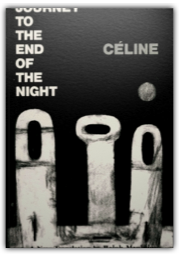
When it was published in 1932, this then-shocking and revolutionary first fiction redefined the art of the novel with its black humor, its nihilism, and its irreverent, explosive writing style, and made Louis-Ferdinand Celine one of France's—and literature's—most important 20th-Century writers. The picaresque adventures of Bardamu, the sarcastic and brilliant antihero of Journey to the End of the Nightmove from the battlefields of World War I (complete with buffoonish officers and cowardly soldiers), to French West Africa, the United States, and back to France in a style of prose that's lyrical, hallucinatory, and hilariously scathing toward nearly everybody and everything. Yet, beneath it all one can detect a gentle core of idealism. 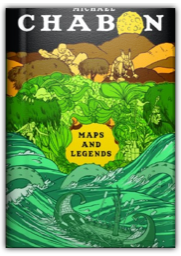
Michael Chabon's sparkling first book of nonfiction is a love song in 16 parts — a series of linked essays in praise of reading and writing, with subjects running from ghost stories to comic books, Sherlock Holmes to Cormac McCarthy. Throughout, Chabon energetically argues for a return to the thrilling, chilling origins of storytelling, rejecting the false walls around "serious" literature in favor of a wide-ranging affection. His own fiction, meanwhile, is explored from the perspective of personal history: post-collegiate desperation sparks his debut, The Mysteries of Pittsburgh;procrastination and doubt reveal the way toward Wonder Boys;a love of comics and a basement golem combine to create the Pulitzer Prize-winning The Amazing Adventures of Kavalier & Clay;and an enigmatic Yiddish phrasebook unfurls into The Yiddish Policeman's Union. |

My Library
Collection Total:
1165 Items
1165 Items
Last Updated:
Sep 9, 2009
Sep 9, 2009
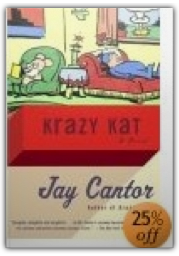

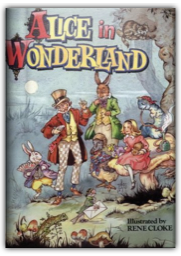
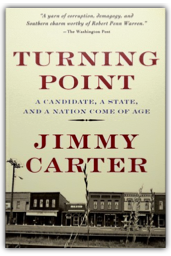


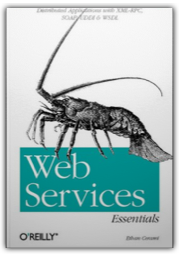
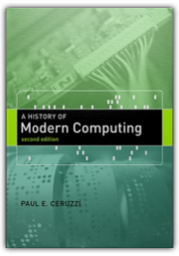
 Made with Delicious Library
Made with Delicious Library